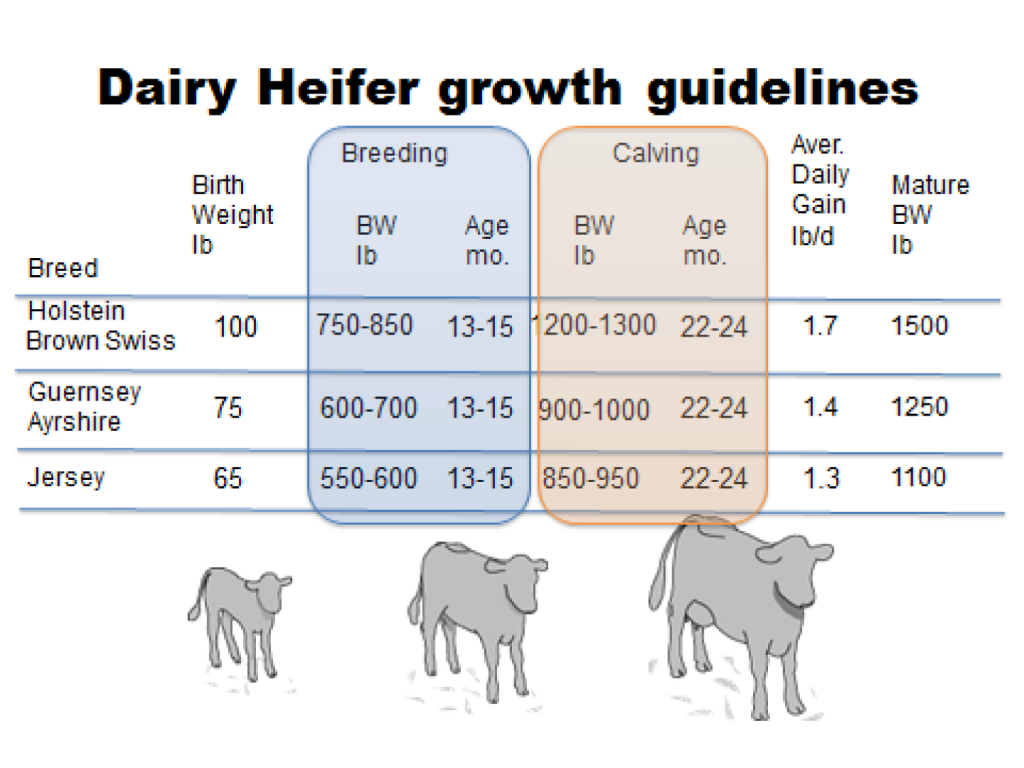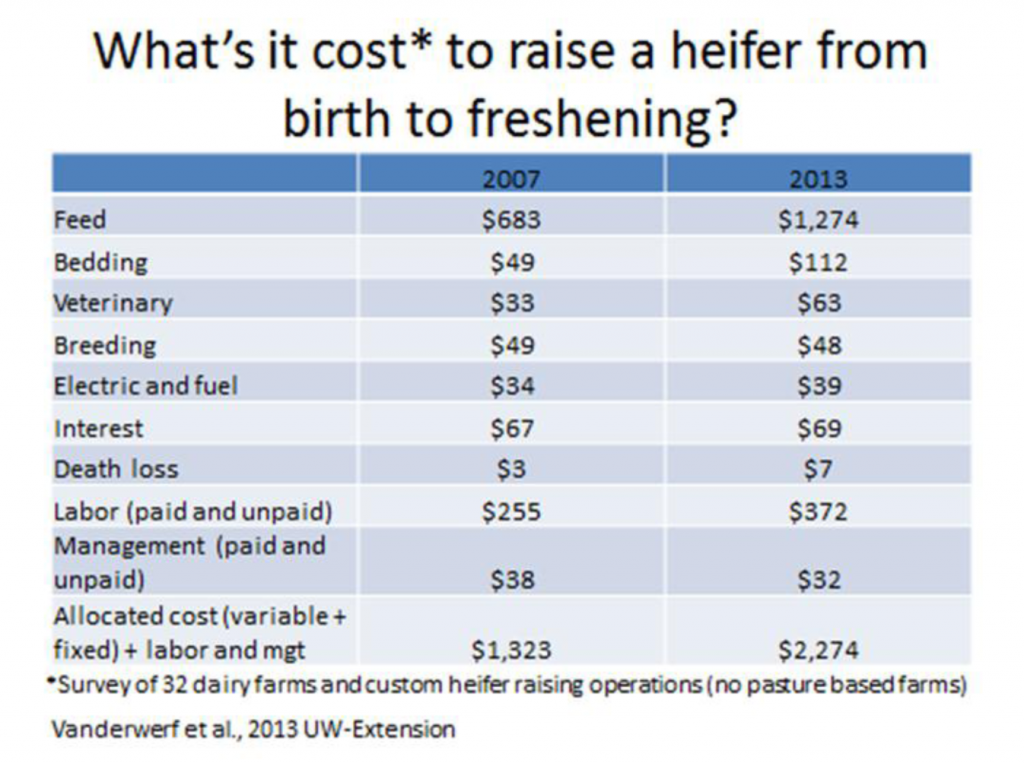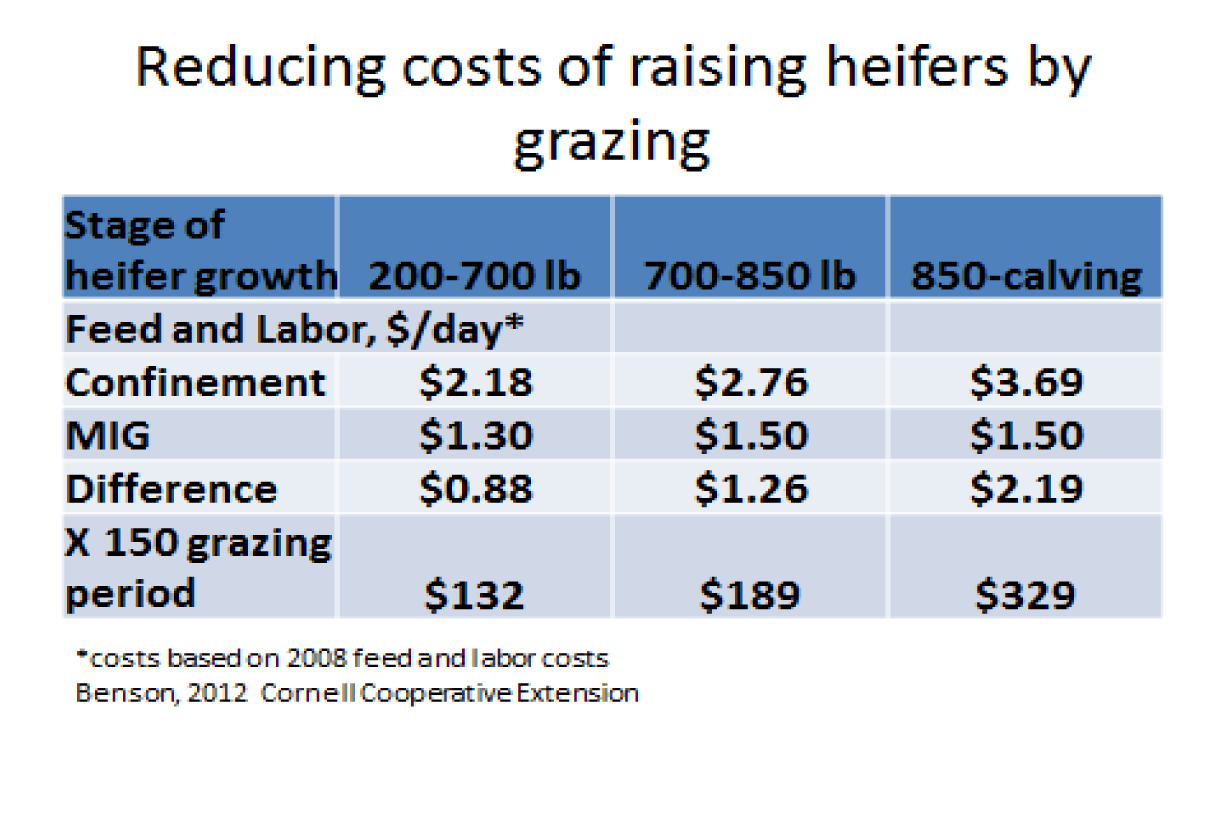Costs for raising replacement heifers, like other inputs on dairy operations, have been rising continuously for more than 15 years. Unfortunately market prices received for heifers are landing in the exact opposite direction. Today the market value is below the rearing costs which place dairy managers between a rock and a hard place. You can`t do without replacements but it`s costing too much to raise them. It`s all about being more economical. Ironically the way to get more is achieved by focusing on less.
You Need Advisors Who Know “LESS”
It seems almost counter-productive to expect less from those who are experts in their field, but with the state of the market and the obligation to be profitable, everyone needs to be a specialist in the less proposition: less feed costs, less raising time, less time to weaning, less time to breeding. Each person that you consult with or work beside on your dairy needs to have this appreciation for less: Extension Dairy specialists, nutritionists, veterinarians, geneticists and financial advisors can apply their resources to your specific situation and help you find how to make “less” your value proposition.
SIX ways to MAKE MORE with “LESS”
There are many ways to improve your heifer replacement program. It is no surprise that prolonged challenges in this area is having the positive effect of producing specialists who have focused on solving the numerous issues that are involved. Of course, the Internet is a gold mine of ideas, examples, charts and field trials that can make your decision making more focused. Dr. Larry Tranel and Dr. Lee Kilmer, both of Iowa State University, have provided a compendium of materials to polish up your understanding of this area (Click here). You can start by reviewing published materials or seek out on line or live seminars.
1. Don’t Raise Anything “Less” than the Best
This first step is probably the most important for long term heifer replacement success. We absolutely must get past the unwritten rule that you raise every calf that is born alive. Modern genetic tools such as sexed semen (Read more: Sexed Semen from Cool Technology to Smart Business Decision and SEXED SEMEN – At Your Service!) and genomics (Read more: The Genomic Bubble Has Burst?, How Genomics is Killing the Dairy Cattle Breeding Industry and Genomics – Lies, Miss-Truths and False Publications!) are combining with improved management to make a positive impact on heifer raising. Using one or all of these can mean that there are lot more heifers on the ground than are needed to replace culled cows. There are formulae available that can determine the number of replacement heifers to expect on your operation. They factor in variables such as herd size, calving interval, sex ratio of calves born alive, calf mortality rate and age at first calving. Actual examples are available online. You can use the Kilmer/Tranel site previously noted or seek out one that may be more accessible to your dairy location or go to Penn State Extension. Raising extra heifers represents extra expenses for feed, labour, facilities. This needs to be pencilled out against potential income the heifer sales might generate. (Read more: Should you be raising your own heifers? and Herd Health, Management, Genetics and Pilot Projects: A Closer Look at ZOETIS, 8 Ways DNA PROFILING Your Whole Herd Will Improve Your Breeding Program and Genomic testing: Feeding the world with profitable cows)
Of course, once you know the exact number you are targeting it is equally important to determine which heifers are actually the best. One option is to identify the lower genetic potential calves by genomic testing and then cull the bottom 10-25% before investing dollars in raising them. Making an informed decision can result in very significant improvements in milk and fat yield.
2. Less Feed Cost
Feed literally eats up a large portion of your dairy expense budget. It therefore is a prime target for management efficiency. Meticulous record keeping is needed to make sure that you have good data for decision making. This is an area which can have wide variation on inputs – due to geography, logistics or specific farm variables such as soil fertility and availability. More than in the past, managers are considering rotational grazing. Motivated by using what is already available, reducing labor and machinery costs or some seek the better profit margins on organic milk which requires pasture-fed management of the milking herd. Other location dependent options could include using various by-product feedstuffs to reduce feeding costs. I recall my first surprise when I learned that cookies and donuts from local factories and fast-food operations were becoming part of dairy herd rations. It gives a whole new meaning to “milk-and-cookies”.
3. Less Confinement Feeding Could Net Profits
Intensive grazing of dairy heifers can reduce cost of labor and feed by reducing manure management and the feeding of harvested forages. Reducing costs by grazing heifers on productive crop ground depends on management skills, yield and assumptions used. Reports of field trials are available on line. Also reported are significant health benefits (ultimately less illness, less cost, less staff time) from rotational grazing for dairy heifers (Click here).
Weight and milk production gains with heifers raised on pasture compared to confinement have also been realized. In a study by Posner and Hedtke, 2012, (CIAS Research Brief #89), yearling heifers gained 1.97 and 1.86 pounds per day on pasture and in confinement, respectively. For ME Milk production, the first lactation heifers produced 25,328 and 23,415, pounds of milk respectively for those raised on pasture versus those raised in confinement. Thus, from reducing costs, increasing health and milk production, raising heifers on pasture makes sense.
A significant conclusion is summed up by Dr. Tranel in “Optimizing Your Heifer Enterprise” where he points out: “Feed costs make up the largest share of the costs to raise a calf to freshening. One method to reduce feed costs is to combine corn co-products with low quality forages. A difference of $0.23 per head per day doesn’t sound like a lot until you consider the 800 pound heifer to be the “average” size heifer in a dairy herd. Therefore, a herd of 100 cows would have about 75 heifers that could be fed this lower cost ration. In one year that is a saving of over $6,000.”
4. Less time to Weaning
Tranel and Kilmer point out the benefits of taking less time in getting replacement heifers to the weaning stage. “It typically costs $5-$6 per calf per day to raise a calf from birth to weaning. A 56 day birth-weaning period typically has an estimated $336 of expenses. If this birth-to-weaning cost is subtracted, along with the ownership cost and initial value of the heifer, the cost to raise from weaning-to-calving is $1,661.50 over 674 days or $2.47 per day for the average weight heifer.”
5. Less Time to Breeding
It isn’t unexpected that heifer replacement specialists target less time taken in getting heifers to breeding stage. “Producers should make every effort to grow heifers faster so that they reach the target weights by 13 months of age so that they can be bred.” Getting heifers bred and calving sooner, means they will join the milk string sooner and start generating income.
6. Less Time to Calving
Management strategies targeting less time to calving are positive to many aspects of your heifer replacement program as outlined by the Iowa State Extension Specialists. “Reducing the age at first calving will have one of the greatest impacts on reducing the total costs of raising replacement dairy heifers from birth to calving. Another great impact would be that the doubling of the birthrate from birth to weaning may actually increase costs during that time frame but the milk production benefits later on far outweigh the added costs. More Holsteins calved at 23 or 24 months of age than any other age and these heifers produced more milk in their first lactation than heifers that calved at an older age. Thus there is no economic advantage to calving heifers at 26 months or older.” The article also contained this nugget from Kilmer and Tranel: “It is important to realize that reducing the heifer raising period from 24 months to 23 months saves approximately $94 per heifer for a total cost of $2,166 per heifer raised. For a 100- cow herd raising 40 replacements each year, this savings would equal $3,760 per year.”

Source: Optimizing Your Heifer Enterprise
The Bullvine Bottom Line
The cost of raising heifers is well above the market value they bring on today’s market. Management practices that focus wherever possible on getting MORE from LESS heifers, in LESS time and with LESS feed costs is the best way to get more out of your replacement heifer program. That also means MORE profitability for your bottom line.
Get original “Bullvine” content sent straight to your email inbox for free.




















Leave a Reply
You must be logged in to post a comment.